Poorly draining gardens can be very difficult to keep plants in. But even the soggiest soils can still support plant life if you choose the right water-loving plants to grow.
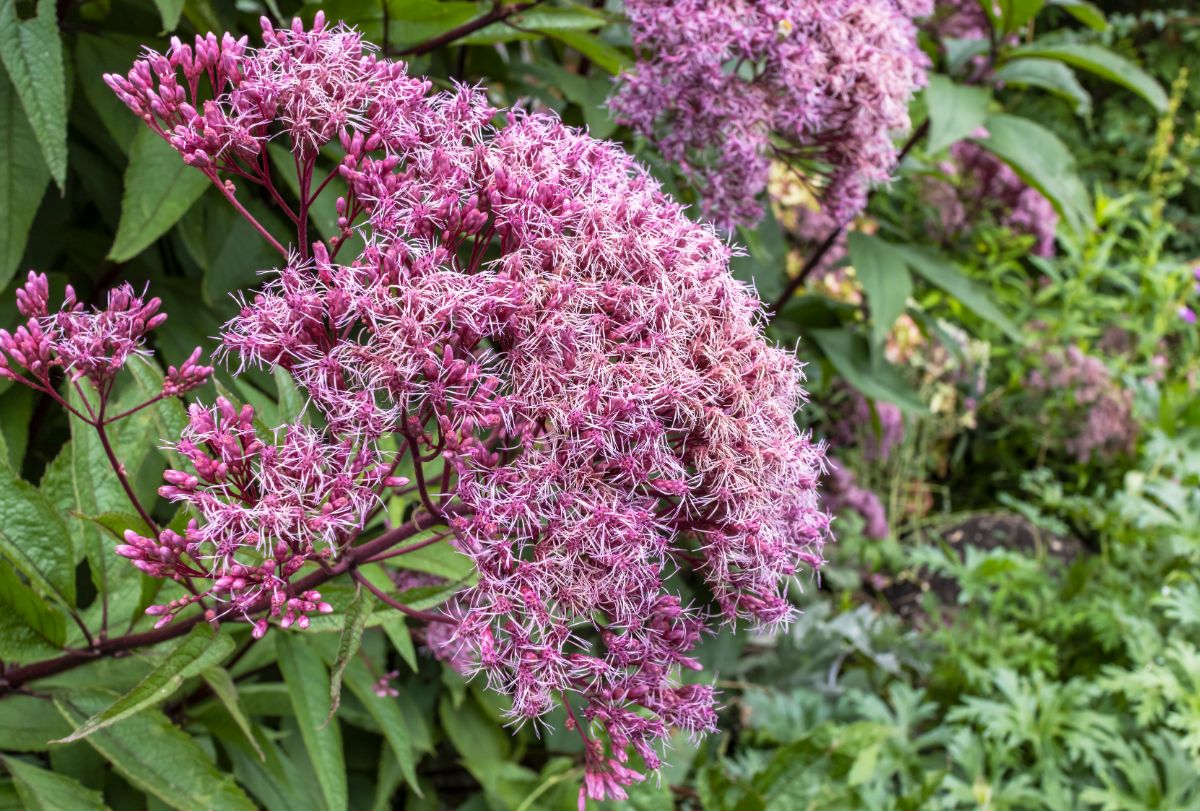
In this guide, you’ll find the top flowers to grow in wet gardens. These plants don’t mind a bit of extra water, and growing them will bring brilliant color to even the dampest sections of your yard.
Jump to:
- 15 best plants to grow in soggy soil
- 1. Joe Pye weed (Eutrochium purpureum)
- 2. Iris (Iris spp.)
- 3. Cardinal flower (Lobelia cardinalis)
- 4. Calla lily (Zantedeschia aethiopica)
- 5. Hardy hibiscus (Hibiscus moscheutos)
- 6. Spiderwort (Tradescantia ‘Sweet Kate’)
- 7. Papyrus (Cyperus spp.)
- 8. Turtlehead (Chelone spp.)
- 9. Forget me not (Myosotis spp.)
- 10. Swamp milkweed (Asclepias incarnata)
- 11. Meadowsweet (Filipendula ulmaria)
- 12. Astilbe (Astilbe chinensis)
- 13. Canna (Canna spp.)
- 14. Bee balm (Monarda didyma)
- 15. Mint (Mentha spp.)
- Summary
15 best plants to grow in soggy soil
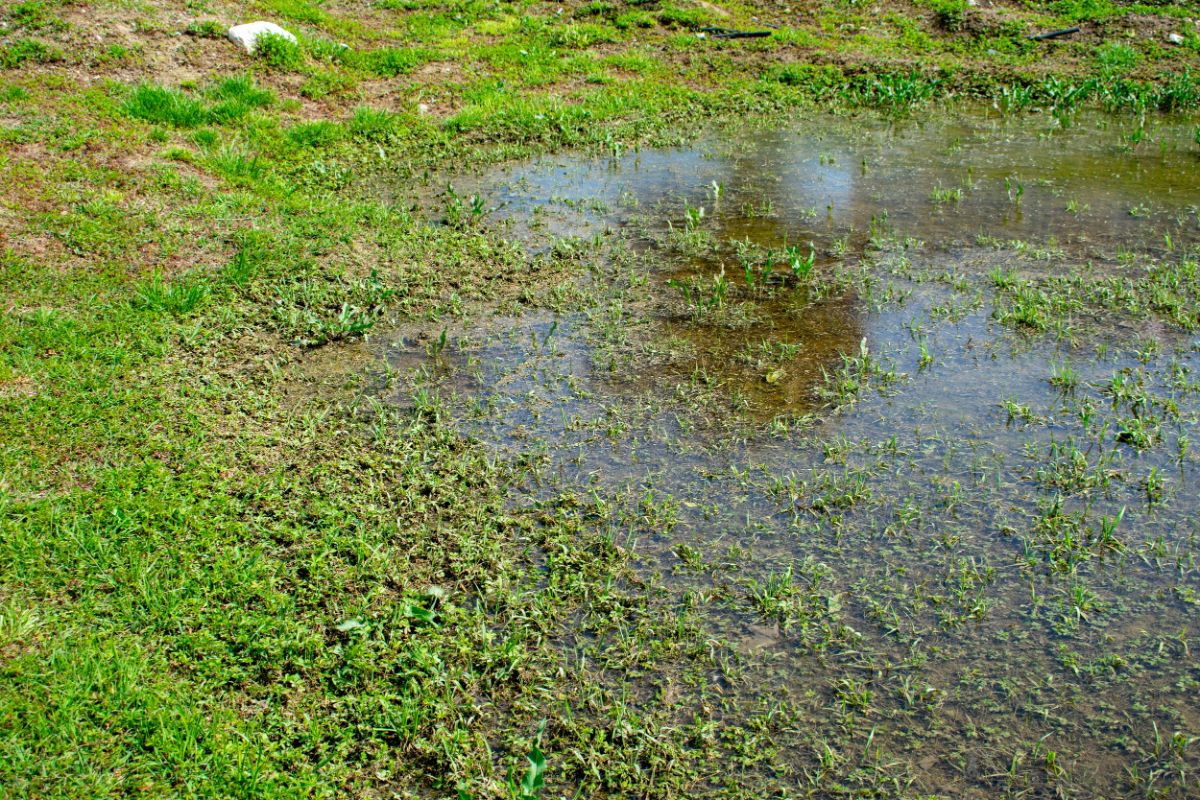
If you have a poorly draining garden, you’ll want to avoid growing plants that don’t like a lot of extra water, like lavender. Instead, choose plants that like moisture, as they will readily adapt to your garden without much fuss. Below are some of the best plants to grow in wet locations and a few details about why we love them so much.
1. Joe Pye weed (Eutrochium purpureum)
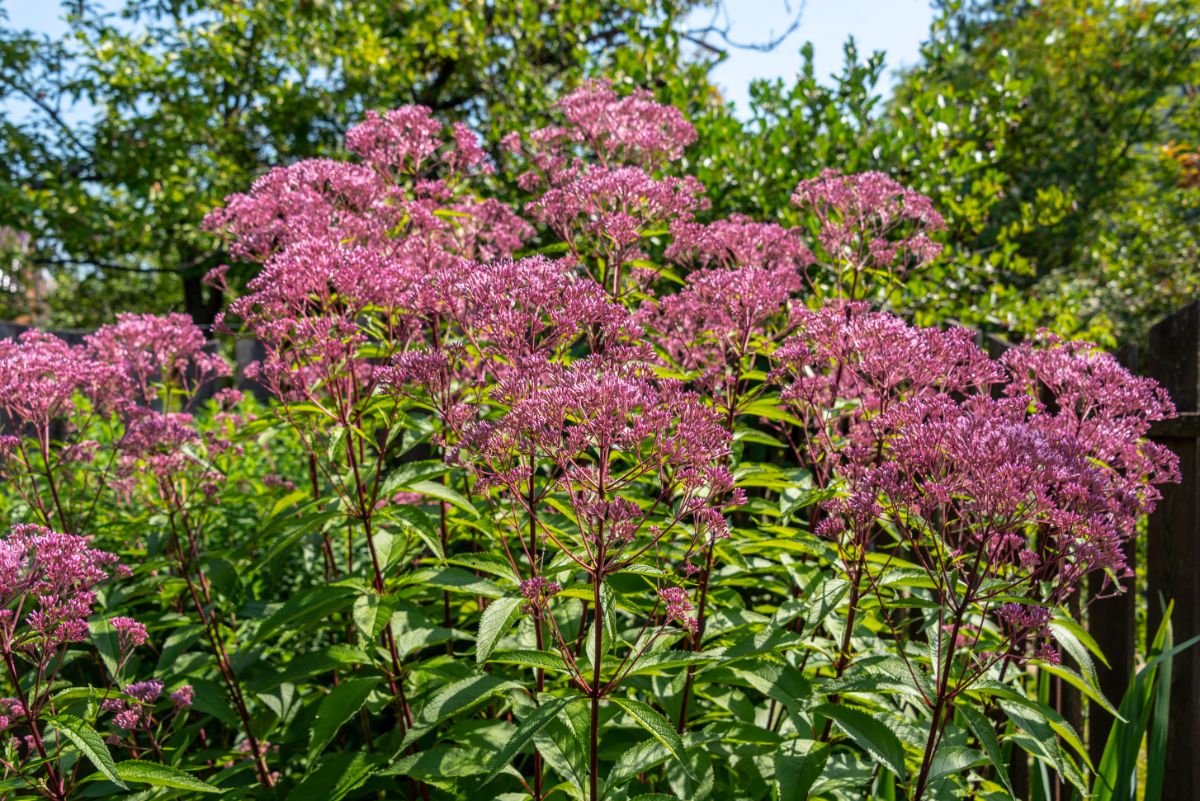
| Plant name: | Joe Pye weed |
| Light requirements: | Full sun to part shade |
| Water requirements: | High |
| Growing zone: | Zones 4 to 8 |
Joe Pye weed naturally grows along streambanks and in other moist areas, so you know it will grow just fine in a soggy garden. This attractive plant will add lots of color to your garden when blooms form from mid-summer to early fall. The fragrant flowers look a bit like milkweed, and they are highly attractive to pollinators.
Joe Pye weed is a tall plant that can grow to 6’ in height. For this reason, it is a good choice for planting towards the rear of your garden, but it will also draw the eye when grown in a patch on its own.
2. Iris (Iris spp.)
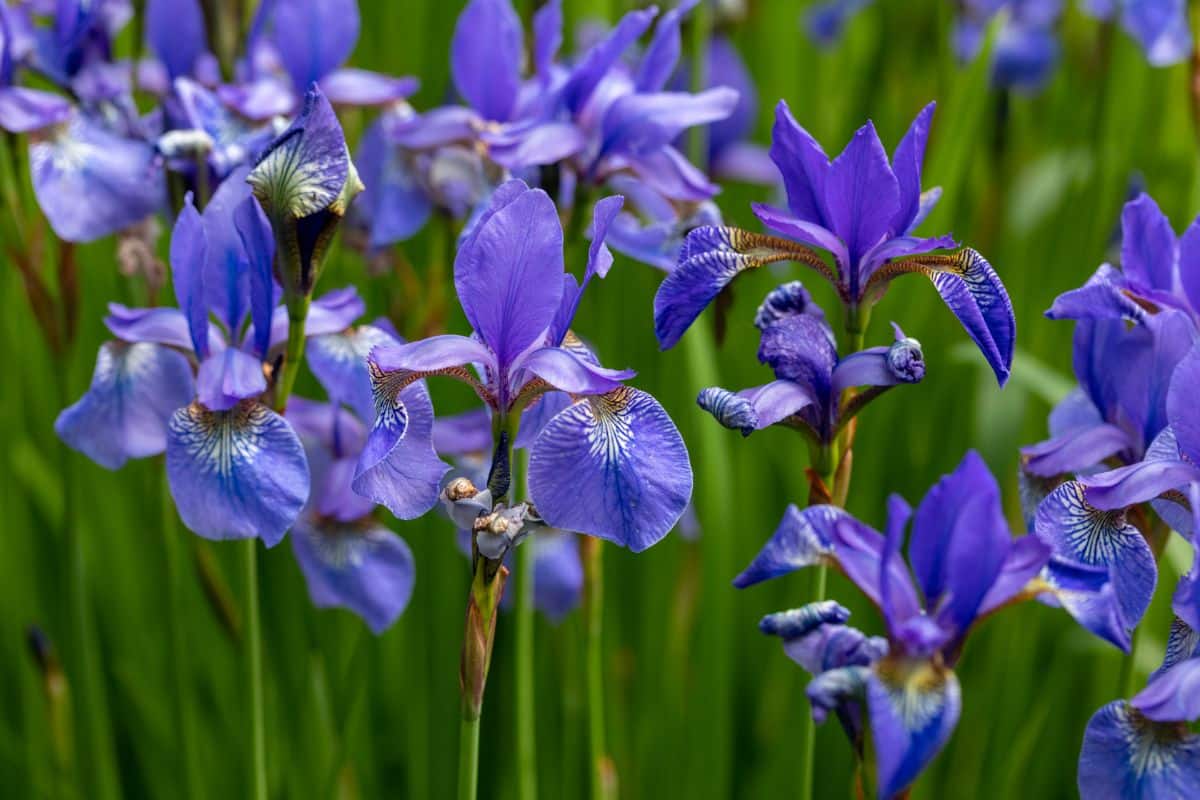
| Plant name: | Iris |
| Light requirements: | Full sun |
| Water requirements: | Depends on variety |
| Growing zone: | Zones 3 to 9, depending on variety |
Many iris species are water-loving plants, but Siberian, Japanese, and blue flag irises are some of the best types to grow in poorly draining spots. Depending on the type of iris you grow, you can find plants with blue, purple, white, or other flower colors. Cultivars also come in tall and dwarf sizes, that are a perfect size for small garden spaces.
Beyond their beauty in the garden, irises make excellent-cut flowers. If you love making bouquets, these are one of the best plants to keep!
3. Cardinal flower (Lobelia cardinalis)
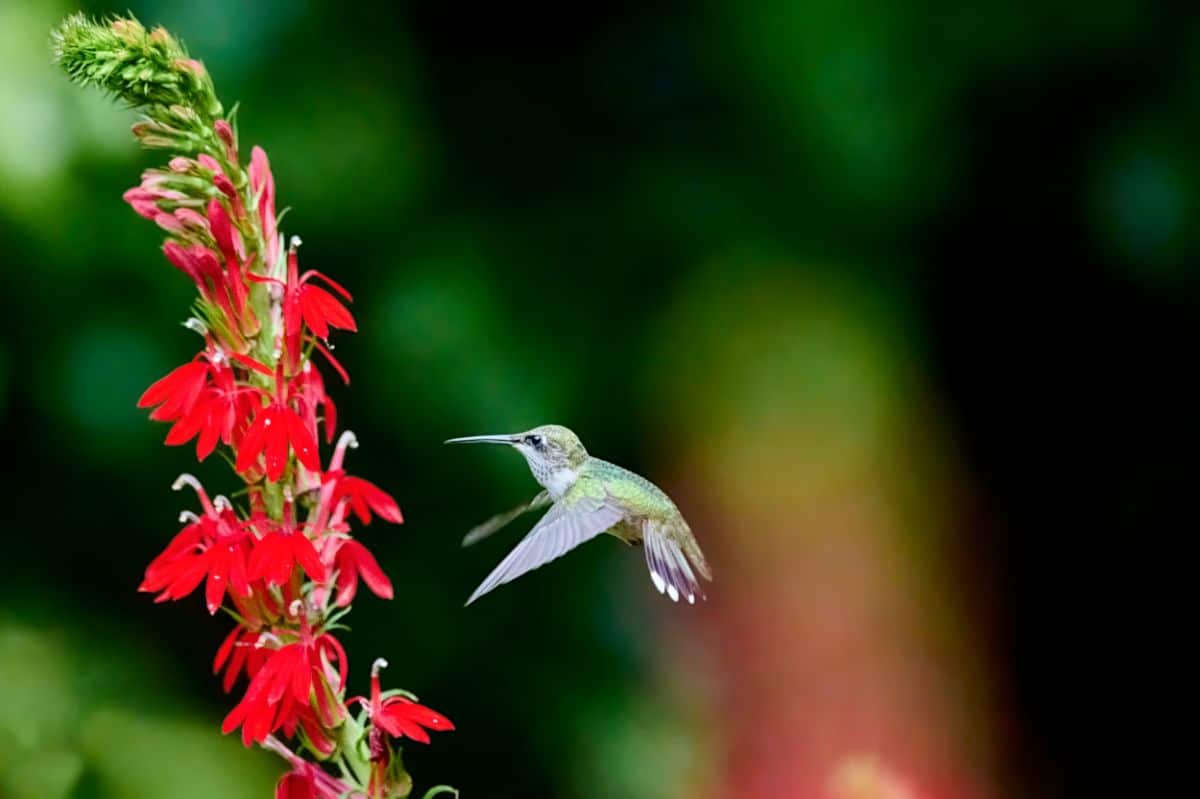
| Plant name: | Cardinal flower |
| Light requirements: | Full sun (in cool spots) to full shade |
| Water requirements: | High |
| Growing zone: | Zones 3 to 9 |
Like Joe Pye weed, cardinal flowers naturally grow in wet areas, and they will thrive in soggy garden soil. These flashy plants have pure red flowers that are so intensely colored they almost glow in garden beds. But the color isn’t just for show – hummingbirds can’t resist the bright petals of cardinal flowers!
Since cardinal flowers grow so well in damp earth, they are a great plant to sow near ponds and other water features as well.
4. Calla lily (Zantedeschia aethiopica)
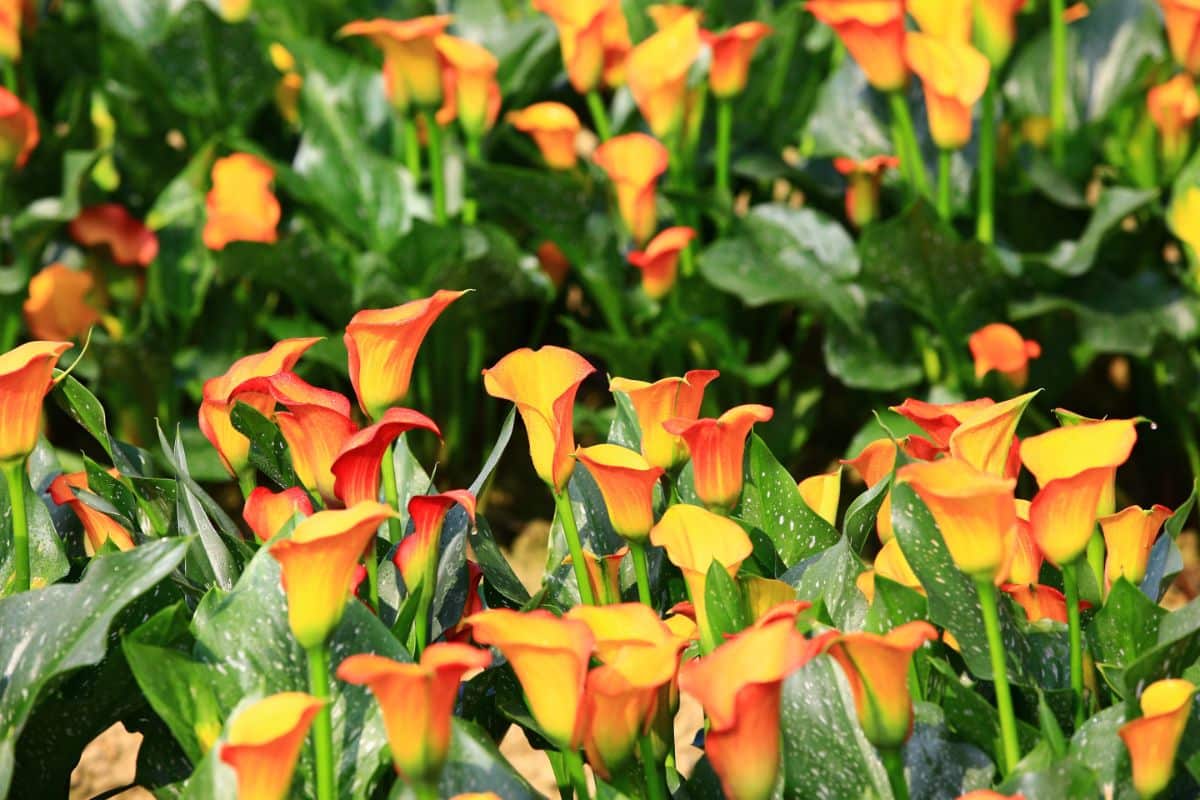
| Plant name: | Calla lily |
| Light requirements: | Full sun to part shade |
| Water requirements: | High |
| Growing zone: | Zones 8 to 10 |
Calla lilies have very distinct, cup-shaped flowers that come in loads of different colors. For even more interest, you can also find calla lily varieties that have speckled leaves that will add charm to your garden even when your plants aren’t in bloom.
Calla lilies are top choices for bouquet making, but they look quite striking in garden beds as well. Keep in mind that calla lilies are not particularly cold hardy, and rhizomes will need to be dug up and overwintered indoors in cold locations.
5. Hardy hibiscus (Hibiscus moscheutos)
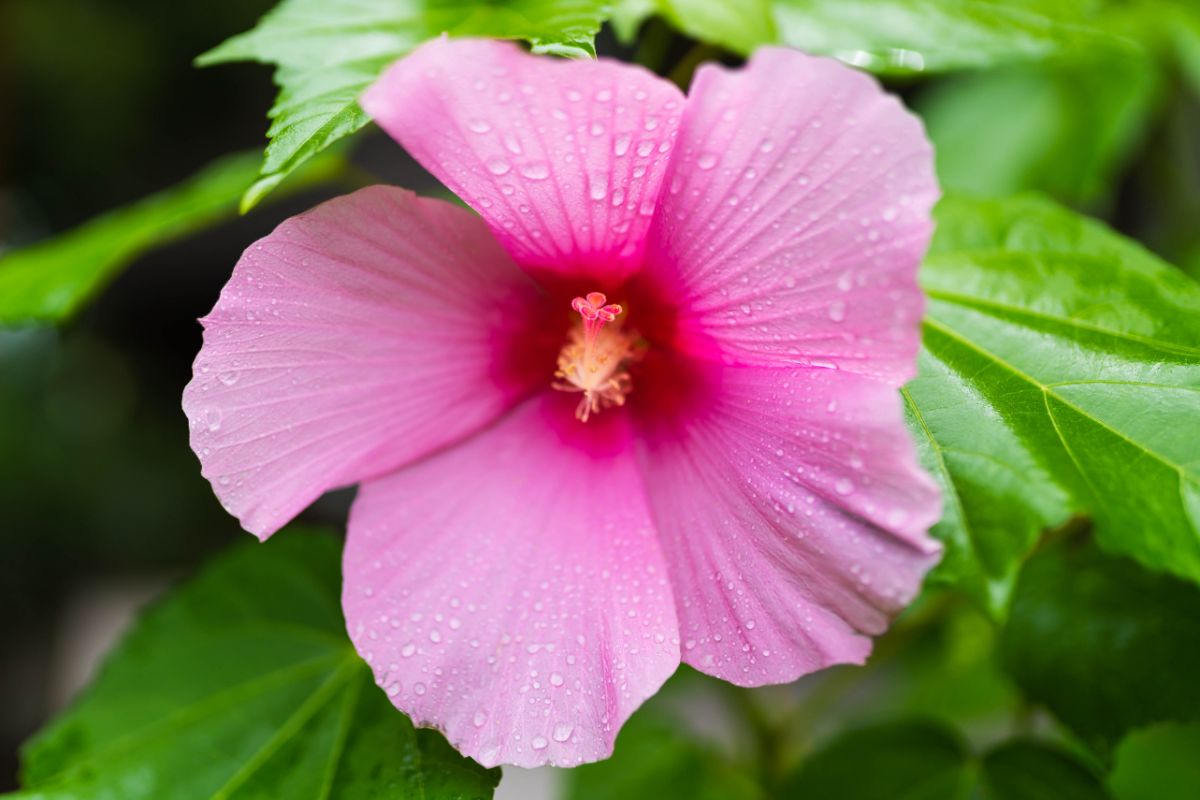
| Plant name: | Hardy hibiscus |
| Light requirements: | Full sun |
| Water requirements: | High |
| Growing zone: | Zones 5 to 9 |
As its name suggests, hardy hibiscus is an adaptable plant that can handle a range of growing conditions. Although it likes regular watering, it is relatively drought tolerant, and it can handle moist soils too.
When mature, hardy hibiscus plants can grow up to 8’ tall, which means you’ll need to leave plenty of space around your plants for them to fill out. Plants will also flower huge, dinner plate-sized blooms that look very tropical and come in a wide range of colors.
6. Spiderwort (Tradescantia ‘Sweet Kate’)

| Plant name: | Spiderwort |
| Light requirements: | Full sun to shade |
| Water requirements: | High to moderate |
| Growing zone: | Zones 4 to 9 |
Spiderworts make excellent foliage plants, and they will dazzle you with their small, yet bright, flowers. These plants grow up to 3’ tall, but often stay smaller, and they can pack a punch when planted under taller irises or other water-loving plants.
Spiderworts can grow happily in many different garden types, including gardens that don’t drain well. Spiderworts will also tolerate full sun or shade, and they are highly attractive to pollinators too.
7. Papyrus (Cyperus spp.)
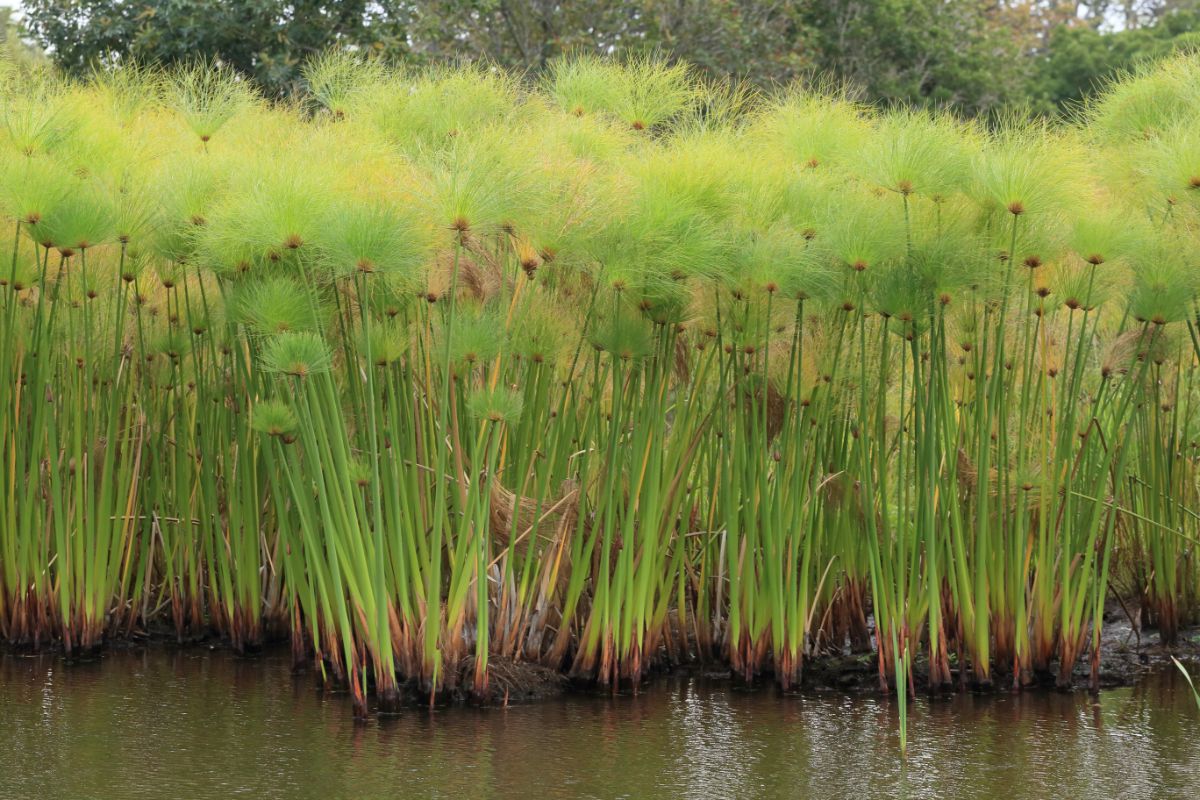
| Plant name: | Papyrus |
| Light requirements: | Full sun to part shade |
| Water requirements: | High |
| Growing zone: | Zones 8 to 10 |
Papyrus plants were famously used as an alternative to paper in ancient Egypt, but they make elegant garden plants as well. You can find tall or dwarf papyrus, ranging in size from 2 to 16’ in height. In the garden, papyrus has an elegant and minimalistic look, with clusters of slender stems that provide texture and movement when the wind blows.
Wild papyrus plants often grow along riverbanks and in other wet areas. In gardens, these plants tend to need daily watering, but if you locate them in a damp spot, they should grow happily with minimal care.
8. Turtlehead (Chelone spp.)
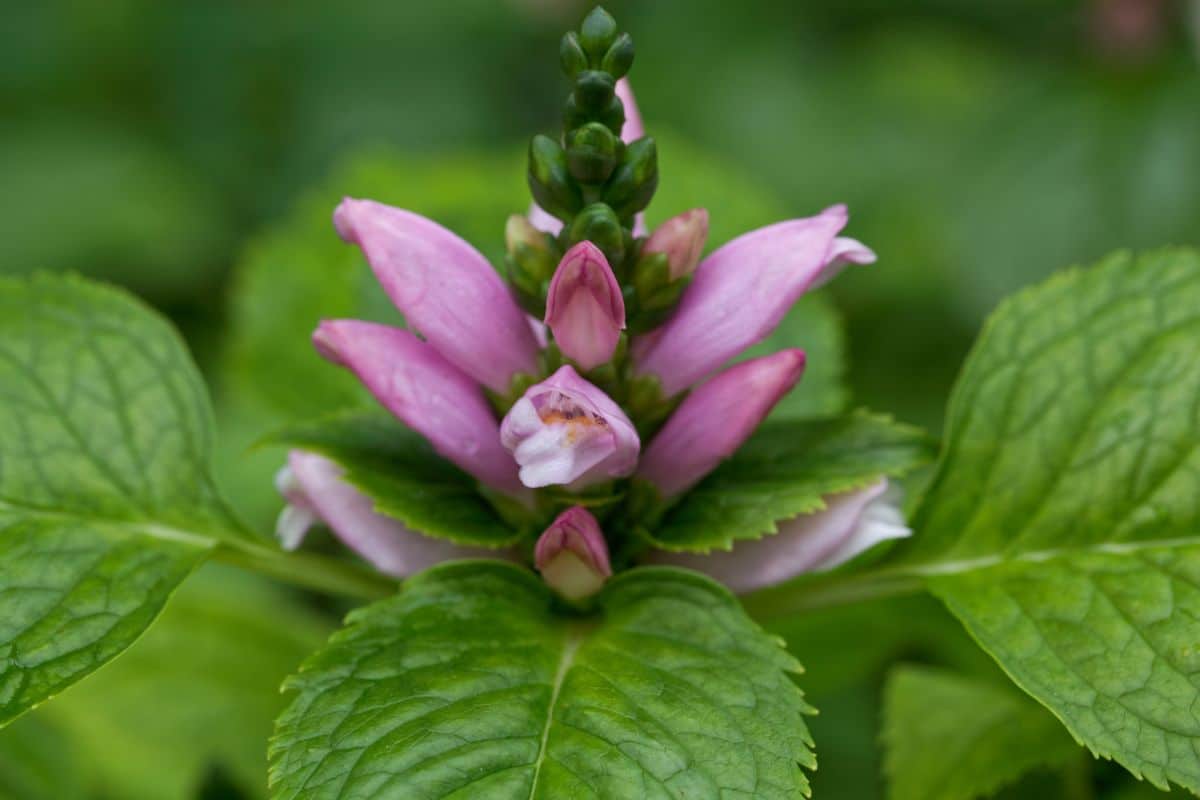
| Plant name: | Turtlehead |
| Light requirements: | Full sun to part shade |
| Water requirements: | High |
| Growing zone: | Zones 3 to 9 |
Turtlehead plants are native to the eastern United States, where they grow along streambanks and in other damp areas. Named for their unique flower shape, turtleheads may resemble snapdragons, but they aren’t closely related.
Turtlehead plants grow best in moist soil and full sun, but they will grow in part shade too. Blooms appear in late summer to early fall and usually come in pink and white.
9. Forget me not (Myosotis spp.)
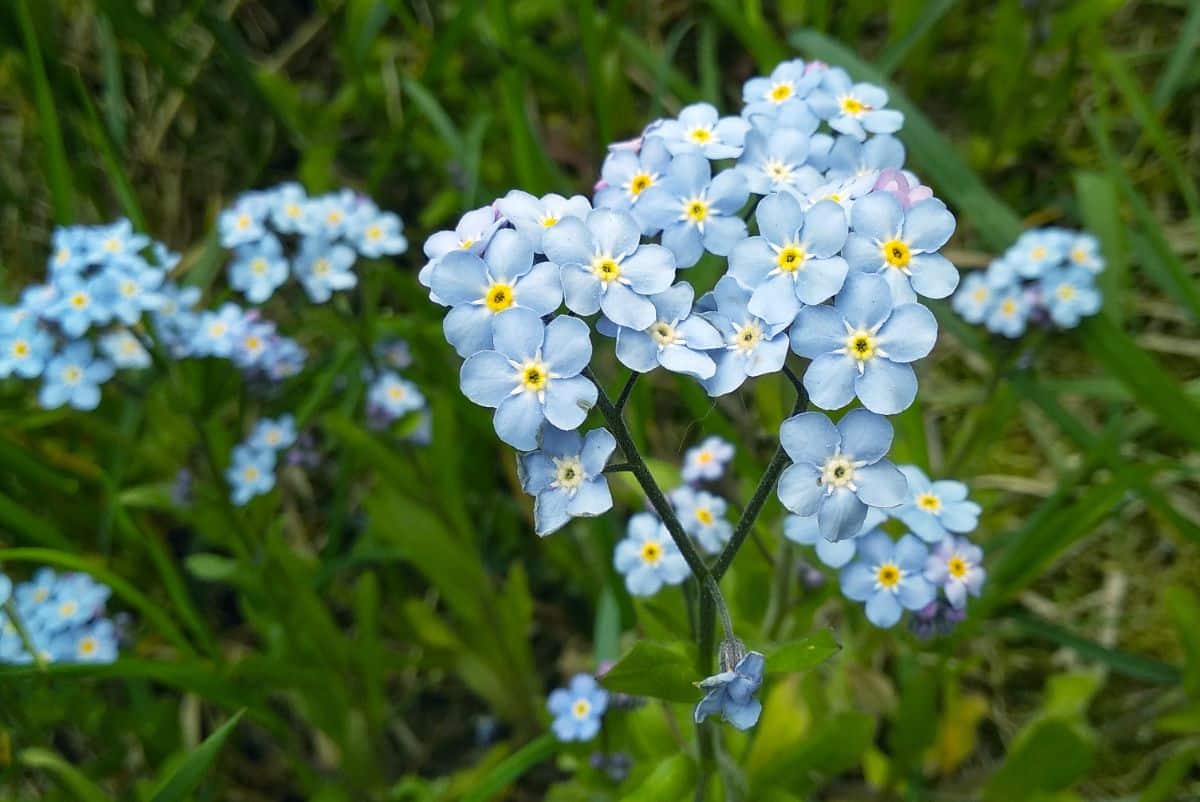
| Plant name: | Forget me not |
| Light requirements: | Full sun (in cool spots) to part shade |
| Water requirements: | High |
| Growing zone: | Zones 3 to 8 |
Forget me nots are sweet little plants that are often kept in container gardens, but they grow in inground beds too. These plants will create rich color when grown en masse, but you can plant them singly as accent plants if you prefer that look.
When forget me not flowers first emerge, they are a bright blue color; however, as the flowers age, they often shift into a brilliant pink tone. This color-changing ability is unusual, but not unique. Other plants in the Borage family often change color, too, and this trait may be used to signal to pollinators that the flowers are running out of nectar!
10. Swamp milkweed (Asclepias incarnata)
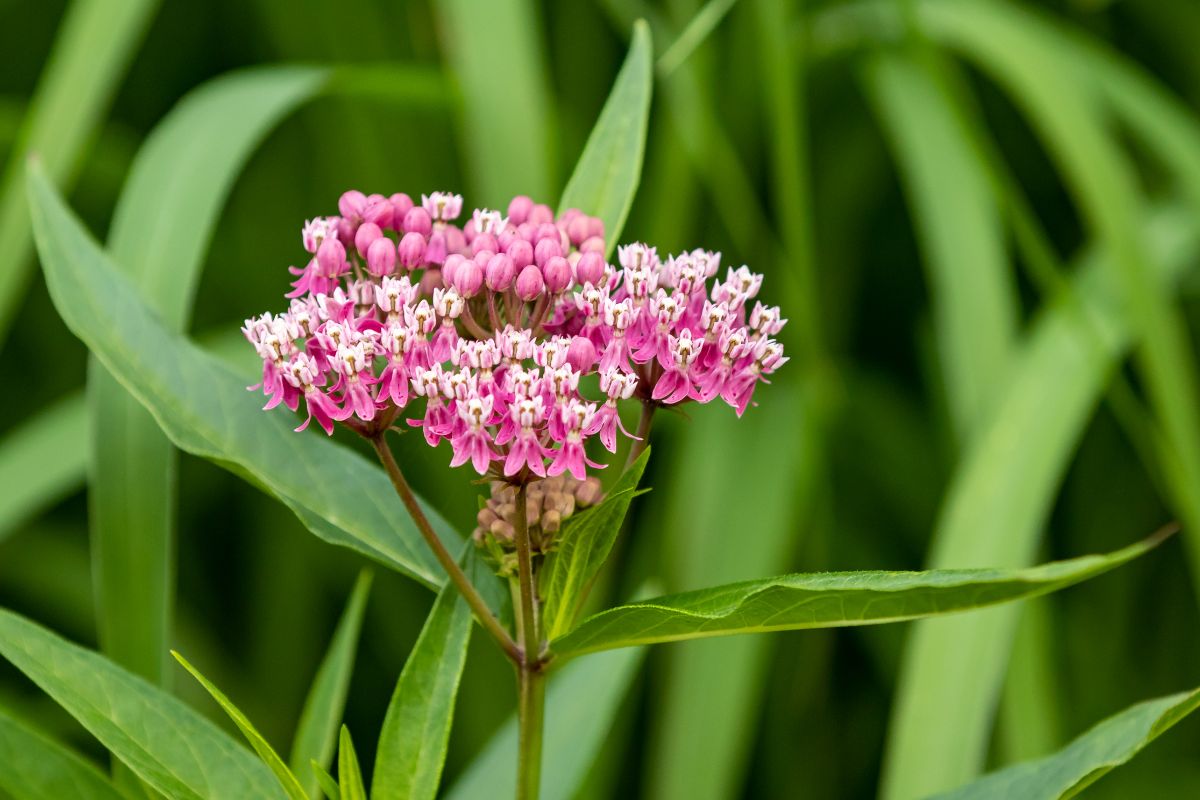
| Plant name: | Swamp milkweed |
| Light requirements: | Full sun to part shade |
| Water requirements: | High |
| Growing zone: | Zones 3 to 9 |
There are over 200 different varieties of milkweed, including some that prefer dry soil and others that can handle wetter locations. Swamp milkweed is one of the best milkweed types to grow in moist areas, and it offers showy flowers that are quite similar in form to the flowers of other milkweed varieties.
Like other milkweed plants, swamp milkweed is an important food source for butterflies, and they are a host plant for monarch butterfly caterpillars. In fact, a study recently found that butterflies were more likely to lay their eggs on swamp milkweed plants than on other milkweed varieties.
11. Meadowsweet (Filipendula ulmaria)
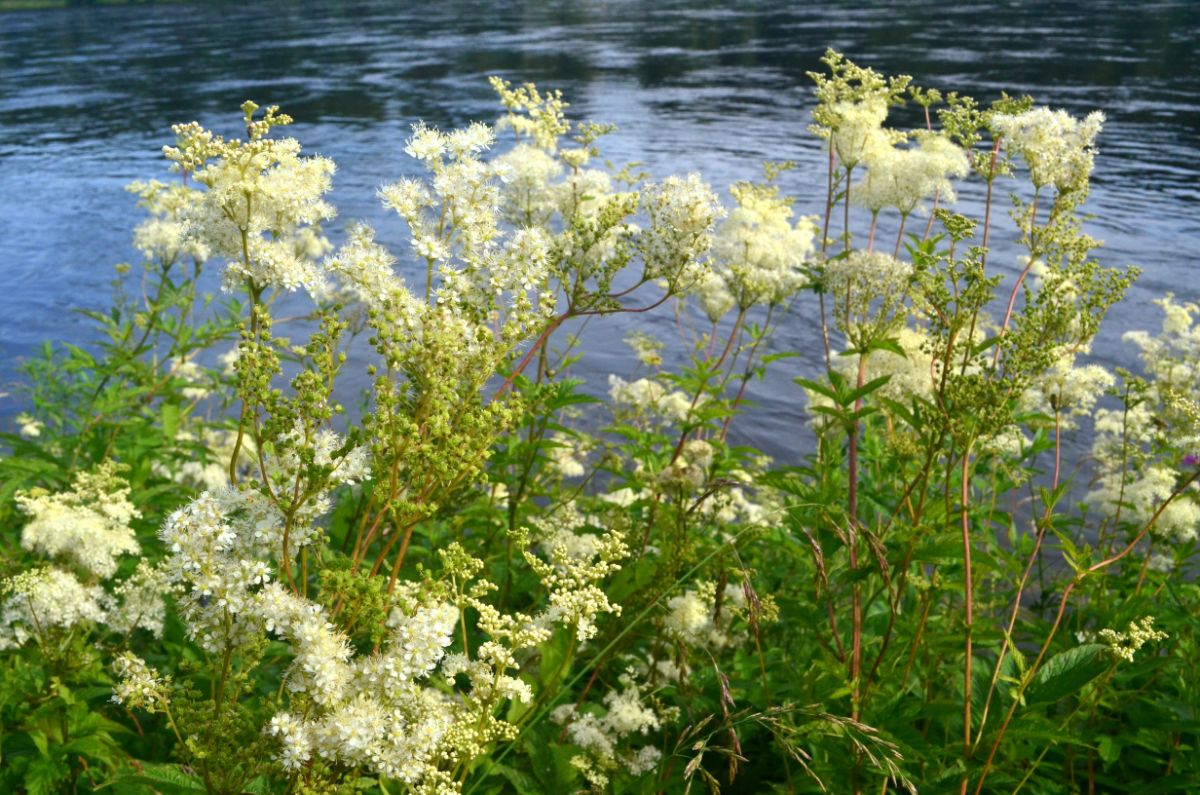
| Plant name: | Meadowsweet |
| Light requirements: | Full sun to part shade |
| Water requirements: | High |
| Growing zone: | Zones 3 to 9 |
Also known as “queen of the prairie,” meadowsweet is native to North America. This plant looks like a larger version of astilbe, and it has similarly formed, fluffy flowers that come in white, purple, and pink. When mature, meadowsweet will grow up to 5’ tall, so it should be planted towards the rear of your garden to keep it from blocking the light from reaching lower-growing plants.
In addition to being a lovely ornamental plant, meadowsweet is a wonderful pollinator plant, too, and native bees are especially fond of it!
12. Astilbe (Astilbe chinensis)
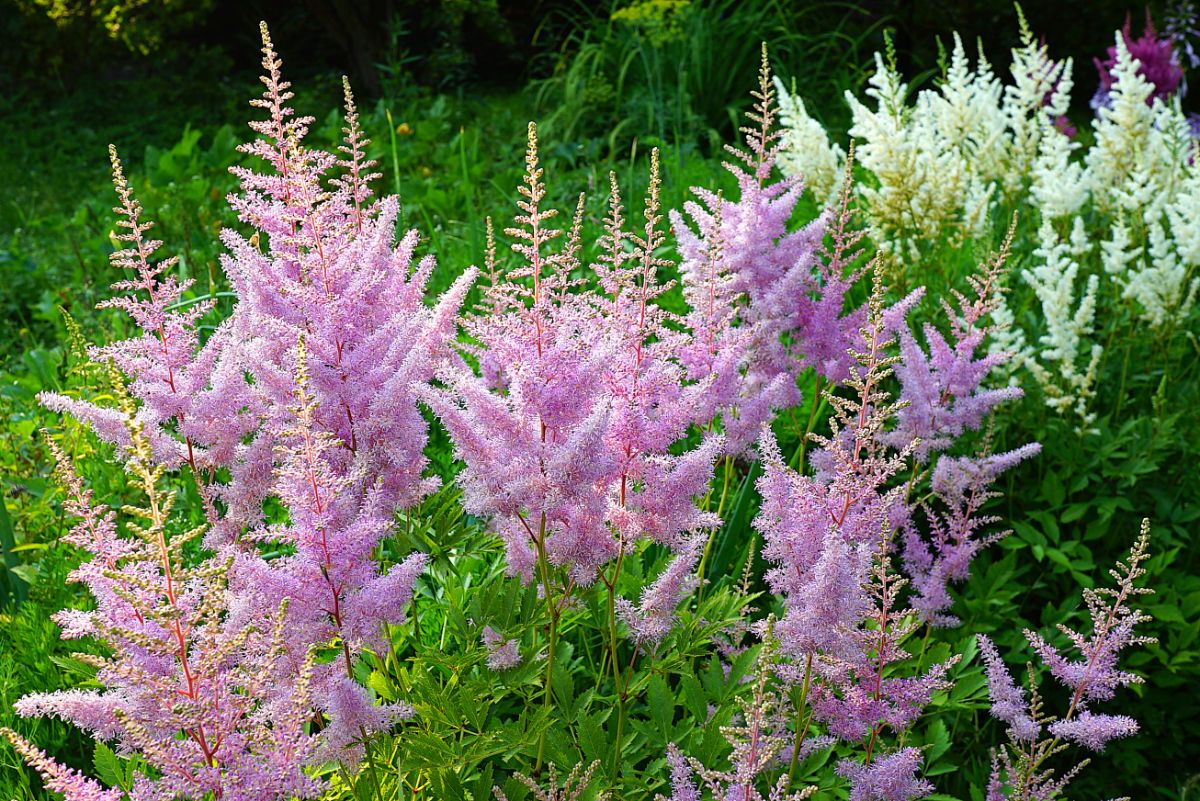
| Plant name: | Astilbe |
| Light requirements: | Full sun (in cool spots) to part shade |
| Water requirements: | High |
| Growing zone: | Zones 3 to 8 |
Astilbe are hardy little plants that prefer moist soil and regular watering. While they grow best in well-draining earth, they don’t like to dry out, so they are a good choice for gardens that tend to stay damp.
Astilbe blooms from May to September and will brighten up any garden with its tall and foamy flowers that come in pinks, reds, white and other shades too. These plants can be grown on their own, but they look particularly appealing when planted together to form a low-maintenance groundcover. Astilbe plants can also grow in full sun or partial shade, but they should be sheltered from the bright sun in very hot areas.
13. Canna (Canna spp.)
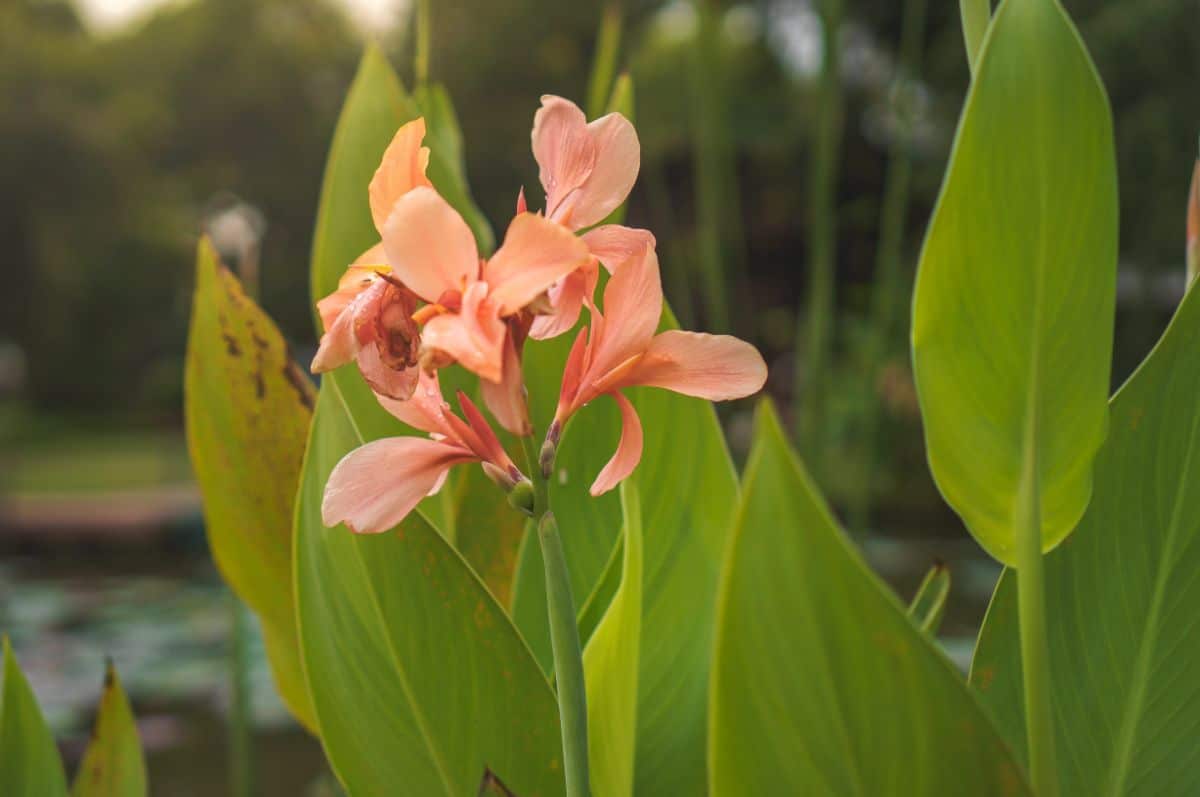
| Plant name: | Canna lily |
| Light requirements: | Full sun |
| Water requirements: | High |
| Growing zone: | Zones 9 to 10 |
If you like tropical-looking plants, canna lilies are hard to beat. These plants can grow up to 8’ tall and produce gorgeous, brightly colored flowers that look spectacular in bouquets and garden beds alike.
While cannas like moist soil, they don’t handle cold weather well. Gardeners in cold locations should dig up canna rhizomes in autumn and overwinter them indoors until temperatures improve. Canna lilies can also be kept in pots, but if you bring them inside, keep them away from your pets as they are toxic if ingested.
14. Bee balm (Monarda didyma)

| Plant name: | Bee balm |
| Light requirements: | Full sun |
| Water requirements: | High to moderate |
| Growing zone: | Zones 3 to 9 |
Bee balm grows best when provided with consistently moist soil, but it is otherwise a hardy plant that doesn’t need a lot of extra care. You can find bee balm in both full and dwarf sizes to fit any garden space. These plants bloom in summer to early fall and produce bright, spiky flowers that look a bit like miniature fireworks.
Bee balm is a member of the mint family, and it will grow vigorously if left unchecked. Flowers are also a top food source for bees, hummingbirds, and other pollinators.
15. Mint (Mentha spp.)
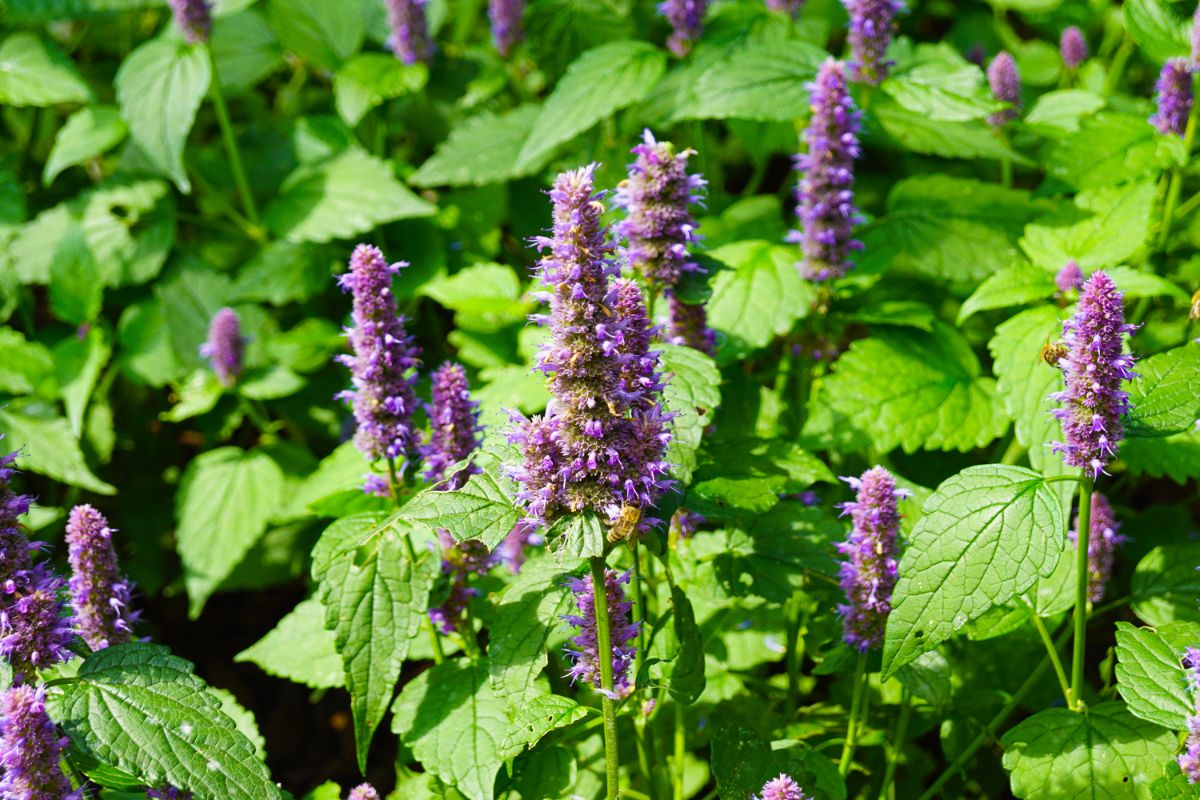
| Plant name: | Mint |
| Light requirements: | Full sun to part shade |
| Water requirements: | High to moderate |
| Growing zone: | Zones 3 to 8 |
Like bee balm, mint is a vigorous grower, and it can take over garden beds if you’re not careful. However, if you have a soggy spot in your yard where other plants won’t grow, you may want to try keeping mint there. Not only do mint plants have highly fragrant leaves, but they also produce charming flowers that are a hit with bees.
Summary
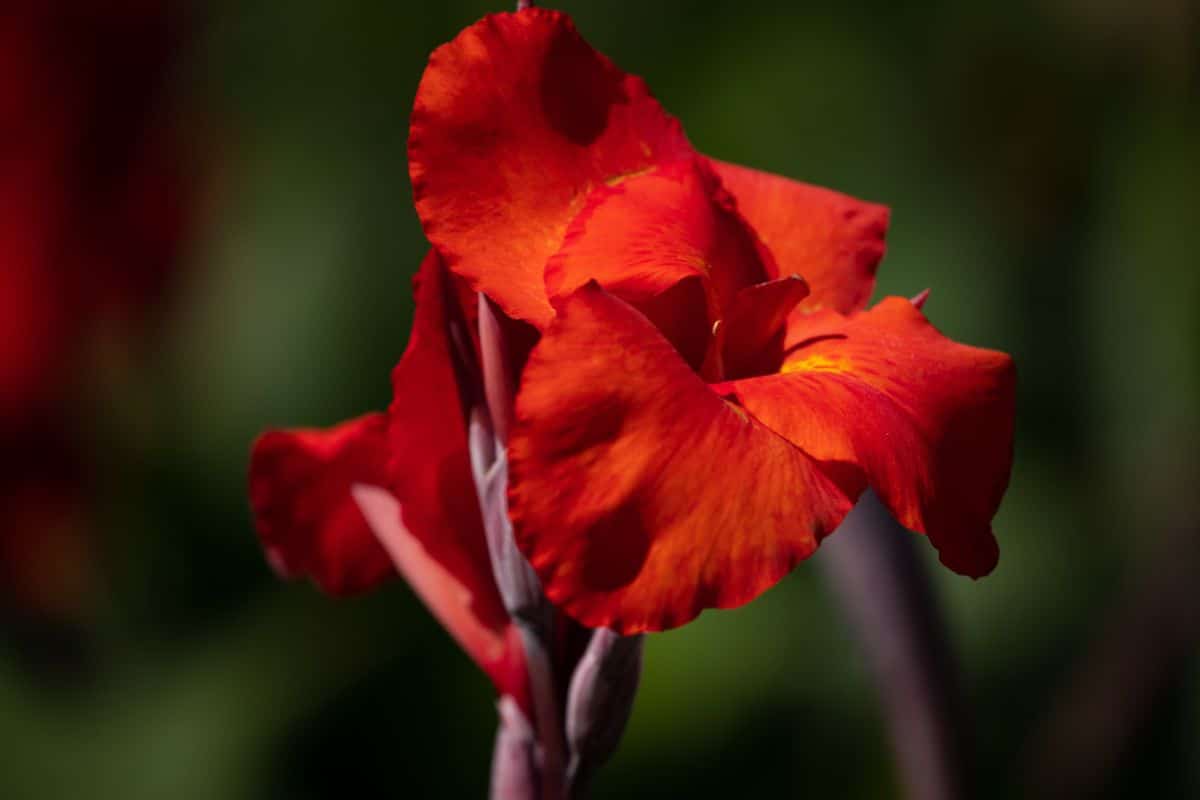
Poorly draining yards can be an eyesore, and they can be very hard to garden in. But if you do a bit of research and choose water-loving plants, you can grow many attractive ornamentals in even the soggiest of soils!
Plants that naturally grow along streambanks are usually good choices for gardens with wet spots, but adaptable and hardy plants, like bee balm and mint, can usually grow in these sorts of gardens too. It’s important to consider the natural growing conditions of the plants you’re interested in keeping and select plants with their ideal watering needs in mind.
While careful plant selection can help you adapt your gardening techniques to wet locations, there are other solutions that you can try too. One of the best ways to increase the number of plants you can grow in a poorly draining yard is to try out raised bed gardening. You can read our full guide on the benefits of raised bed gardening right here.

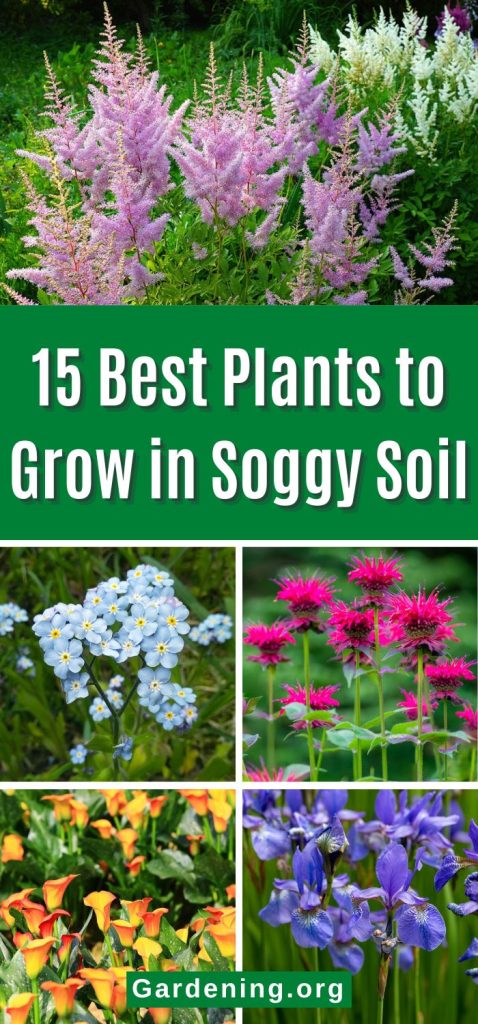
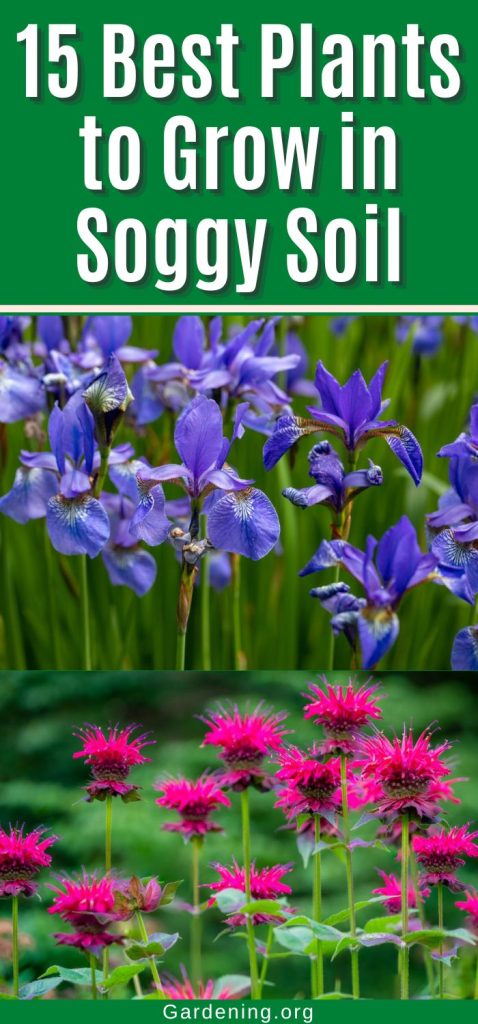
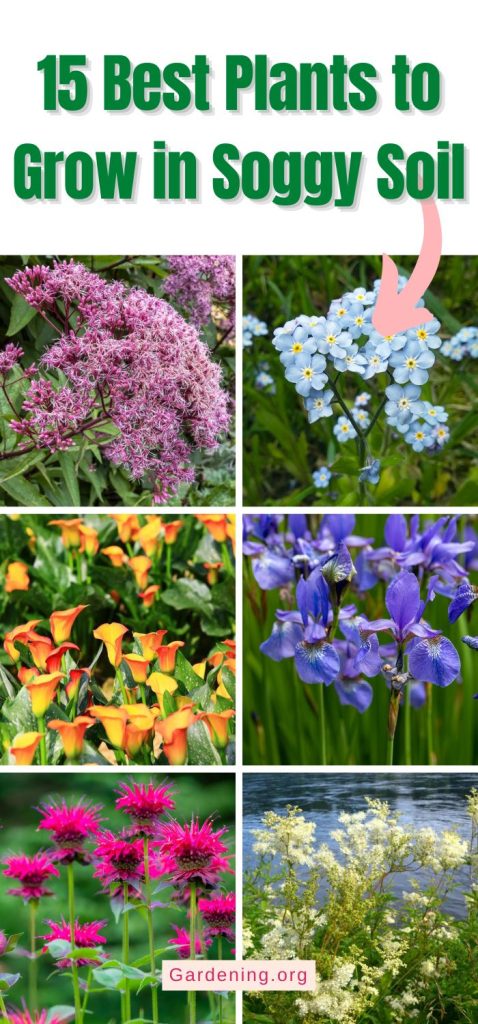
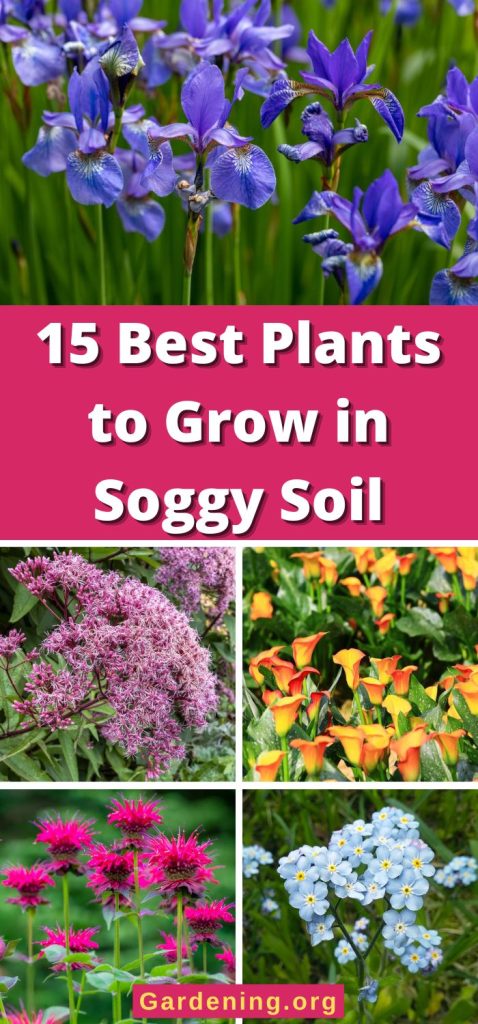

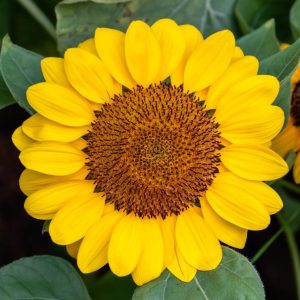
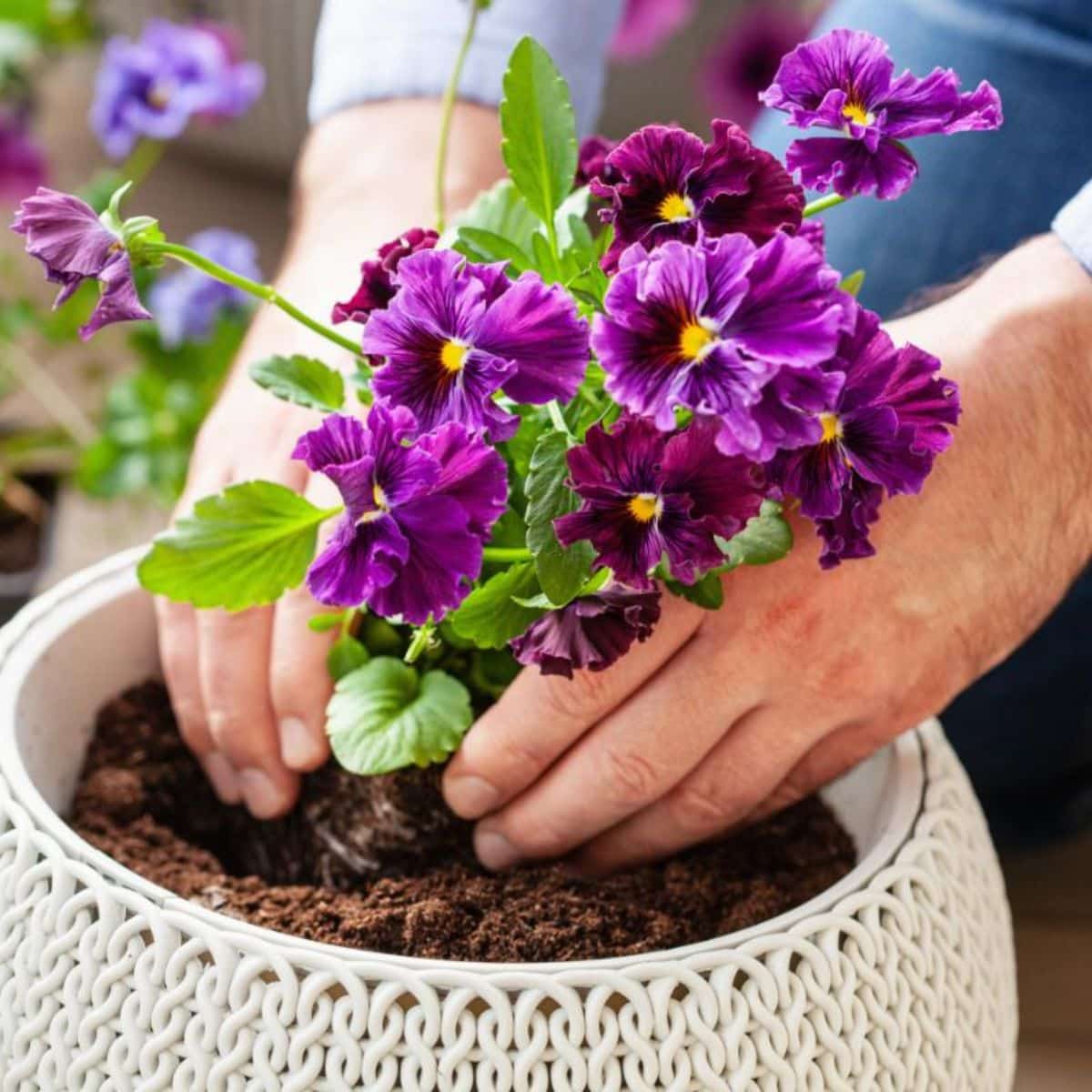

Juddie hinton
Extremely informative for the gardener like myself.
Jean
Thank you ! I believe most of these plants will grow in my yard
Eileen O'Brien
I have a large section of poor draining soil that I would like to plant with some of the above flowers. My biggest problem, however, is that there are many rabbits in the area. They have eaten my Cardinal Flowers so I have to keep those fenced off. They don't seem to touch my Bee Balm.
Which of the other flowers do rabbits go after?
Mary Ward
It's probably easier to cross reference plants that they don't like. Check this list out. It is organized by soil type, which I think will help:
https://extension.psu.edu/programs/master-gardener/counties/pike/publications/rabbit-resistant-garden-and-landscape-plants